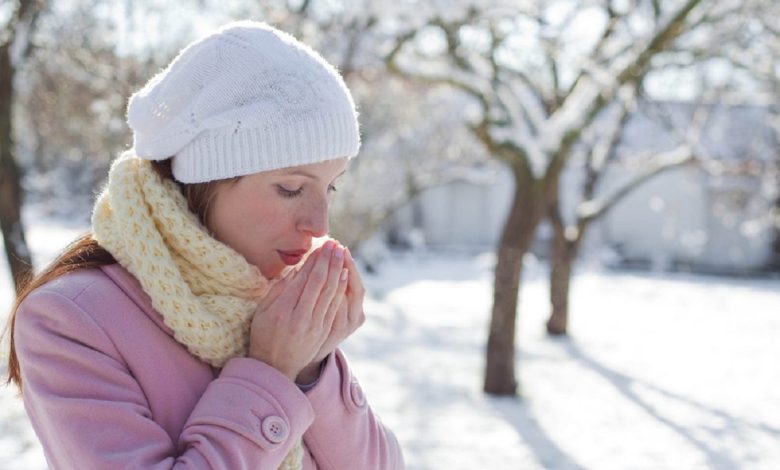Cold Stress: Understanding Its Health Impact And Prevention

Cold Stress: As temperatures plummet during colder months, many of us bundle up in warm layers to combat the freezing conditions.
However, the chill that penetrates our environment can do more than just make us uncomfortable—it can impose significant health risks. Cold stress occurs when the body is unable to maintain its normal temperature, leading to a variety of health complications. This essay will explore what cold stress is, its physiological effects on the body, potential health risks, and methods to prevent and manage it effectively.
What Is Cold Stress?

Cold stress refers to the physical stress experienced by the body when exposed to cold environments, particularly when the body’s temperature falls below normal levels. The body naturally maintains a core temperature of about 37°C (98.6°F), but when the surrounding temperature drops, the body must work harder to maintain warmth. If the body is unable to generate sufficient heat, it begins to lose heat faster than it can produce, which can lead to conditions like hypothermia, frostbite, and trench foot.
Cold stress is not only a concern for individuals working or living in extremely cold environments but can affect anyone exposed to cold weather without adequate protection. Wind, rain, and damp clothing can exacerbate the effects of cold stress by accelerating heat loss from the body.
Physiological Effects Of Cold Stress
When exposed to cold, the body responds in several ways to conserve heat. Blood vessels in the skin constrict (a process called vasoconstriction), which reduces blood flow to the extremities, preserving warmth in the body’s core. At the same time, the body increases heat production through shivering, a rapid, involuntary muscle activity that generates heat.
However, prolonged exposure to cold can overwhelm the body’s defenses, leading to various stages of cold stress:
Mild Cold Stress: As the body works to retain heat, people may feel chilled or experience mild shivering. Blood circulation to extremities decreases, causing cold, numb fingers and toes.
Moderate Cold Stress: As the body continues to lose heat, shivering intensifies, and the skin may become pale or bluish. Cognitive function can begin to decline, making it harder to concentrate or react quickly to one’s surroundings.
Severe Cold Stress: If exposure continues without proper intervention, severe symptoms like hypothermia can develop. In hypothermia, the body’s core temperature drops dangerously low, leading to confusion, drowsiness, slowed breathing, and even unconsciousness. Without prompt treatment, hypothermia can be fatal.
Health Risks Of Cold Stress
Cold stress is a dangerous condition that can lead to a range of health issues, including:
Hypothermia: As the body’s core temperature drops below 35°C (95°F), the brain and internal organs cannot function properly. Symptoms include confusion, drowsiness, and loss of coordination. In severe cases, hypothermia can lead to unconsciousness or death if not treated urgently.
Frostbite: This occurs when skin and underlying tissues freeze due to prolonged exposure to cold. Frostbite commonly affects extremities like the nose, ears, fingers, and toes. In severe cases, frostbite can lead to tissue death, requiring amputation of the affected area.
Trench Foot: Caused by prolonged exposure to wet and cold conditions, trench foot results from poor circulation in the feet. It can cause blisters, redness, and swelling, and, in extreme cases, lead to permanent nerve damage.
Weakened Immune System: Prolonged cold exposure can suppress the immune system, making individuals more susceptible to infections like the common cold, flu, and other respiratory illnesses.
Heart Strain: The body’s efforts to stay warm place additional strain on the cardiovascular system, particularly in individuals with pre-existing heart conditions. The increased workload on the heart can raise blood pressure, increasing the risk of heart attacks.
Prevention And Management Of Cold Stress

The best way to prevent cold stress is to minimize exposure to cold environments and implement protective measures. Key strategies for preventing cold stress include:
Wear Appropriate Clothing: Layering is one of the most effective ways to stay warm in cold environments. Wear multiple layers of loose, warm clothing to trap body heat. The innermost layer should wick moisture away from the skin to keep the body dry, while the outer layers should be windproof and water-resistant to protect against the elements.
Stay Dry: Wet clothing increases the rate of heat loss from the body. If you’re working or exercising outdoors, avoid getting wet from rain, snow, or sweat. Take breaks to remove damp clothing and replace it with dry garments as needed.
Limit Exposure To Cold: Reduce the time spent in cold environments by taking regular breaks in warm, sheltered areas. Whenever possible, avoid exposure to extremely cold or windy conditions.
Stay Hydrated And Nourished: Proper hydration and nutrition are crucial for maintaining body heat. Drink warm beverages and eat high-energy foods to keep the body fueled. Avoid consuming alcohol, which can impair the body’s ability to regulate temperature.
Know The Signs: Recognizing the early signs of cold stress can prevent serious health problems. If you or someone you are with begins shivering uncontrollably, feels excessively cold, or shows signs of confusion or lethargy, seek warmth immediately. If frostbite or hypothermia is suspected, medical attention should be sought immediately.
Prepare Emergency Supplies: If you know you’ll be spending extended periods in cold conditions, pack an emergency kit with extra clothing, blankets, hand warmers, and high-energy snacks. These items can be lifesaving if conditions become unexpectedly harsh.
Final Thought
Cold stress is a serious health risk that can lead to a variety of complications, from mild discomfort to life-threatening conditions. Understanding the physiological effects of cold stress, recognizing the warning signs, and taking preventative measures are key to staying safe in cold environments. With proper clothing, limited exposure, and awareness of potential dangers, the risks associated with cold stress can be effectively managed. Whether spending time outdoors for work or leisure, it’s important to respect the cold and prioritize personal safety to prevent the harmful effects of cold stress.
Also Read:
Boosting Immunity For Autumn: Preparing Your Body For Cold And Flu Season
Dry Lips And Hands Treatment In Cold And Winter
Essential Vitamins To Take In Autumn For Optimal Health
Autumn Veggies: The Nutritional Bounty of Seasonal Vegetables




